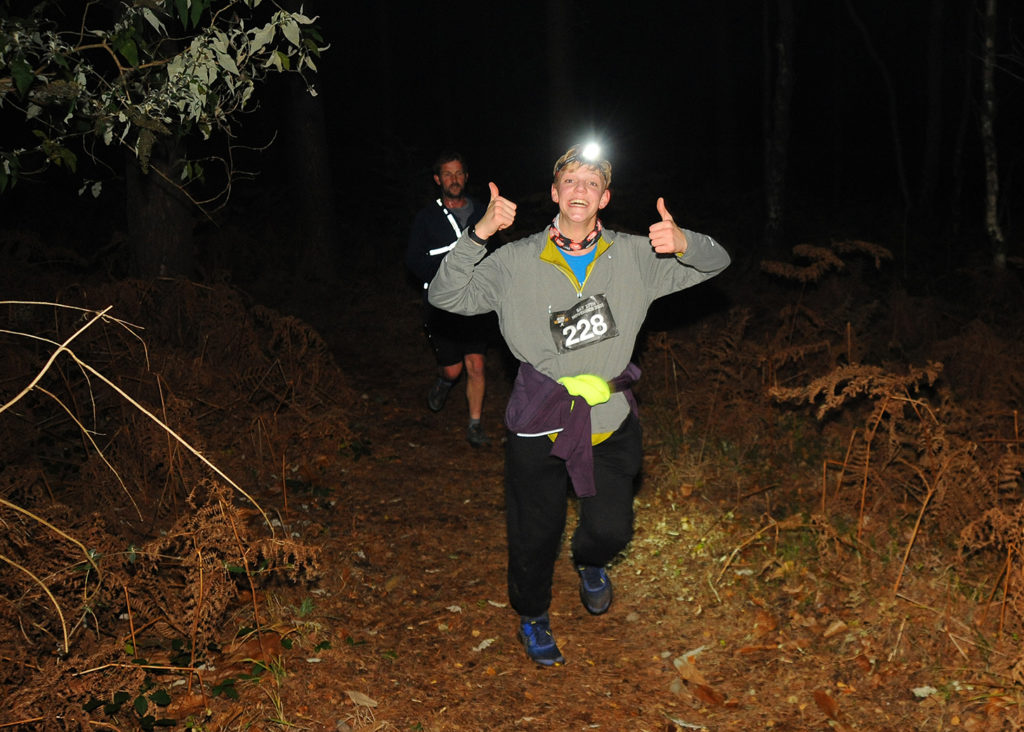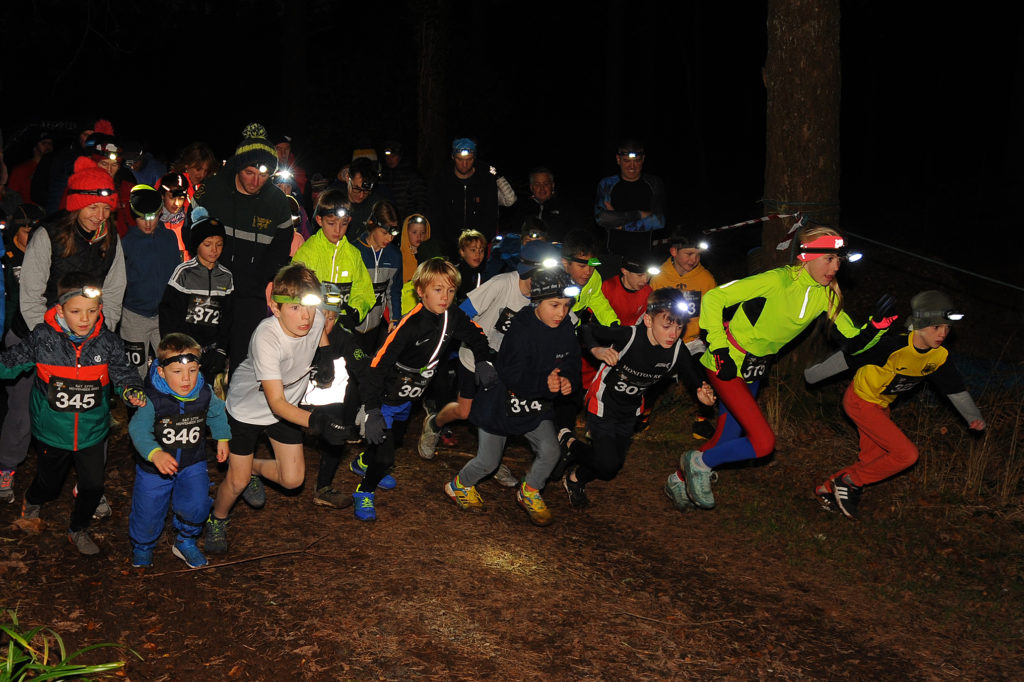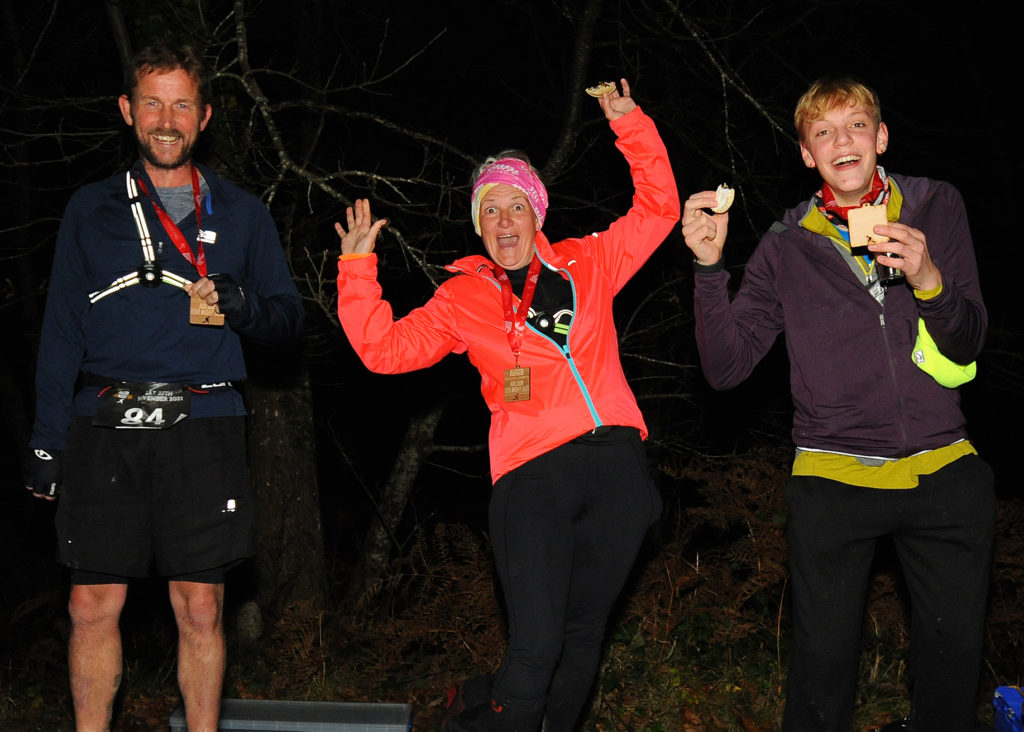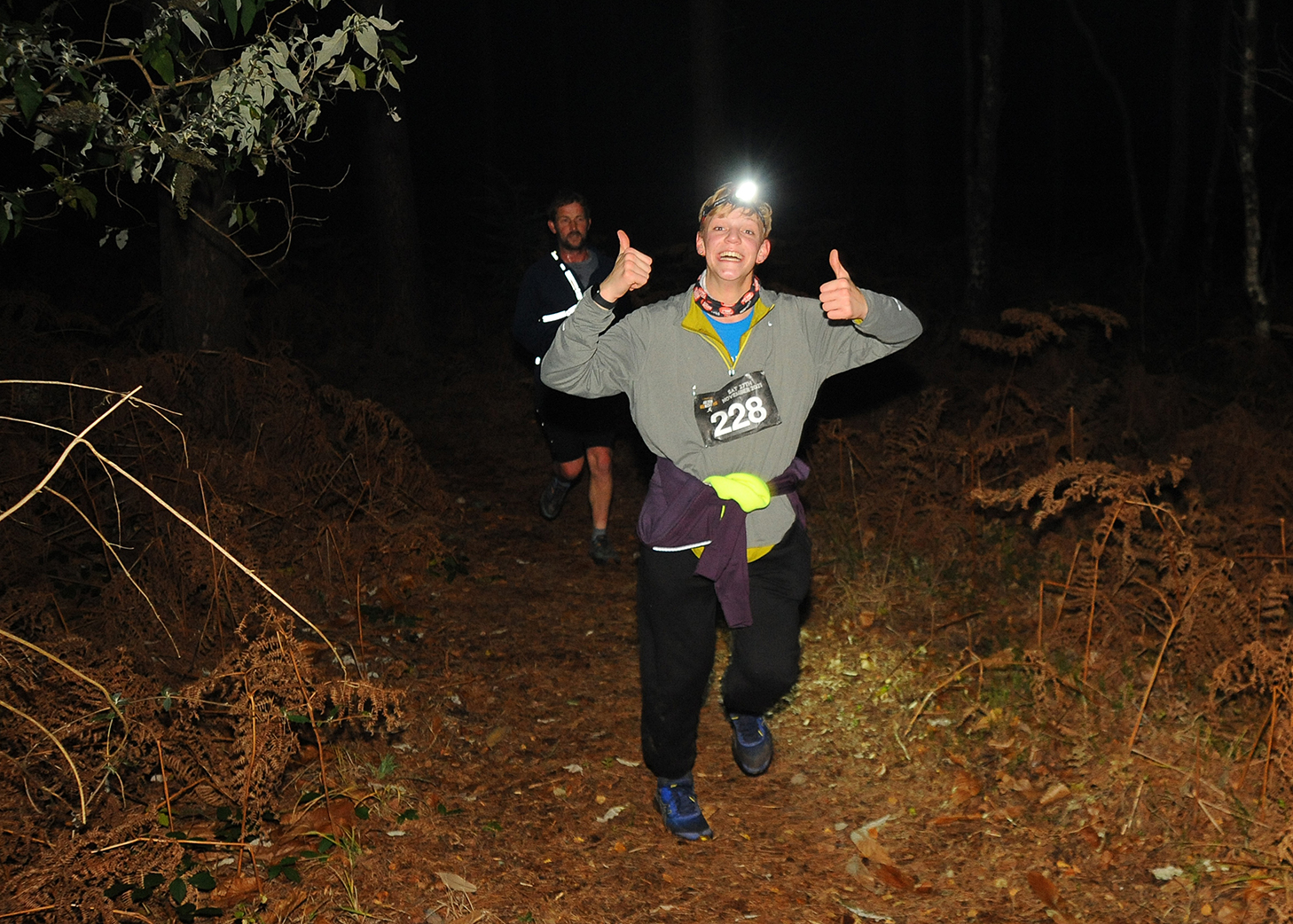How to take photos in the dark: All photographs © Al Macphee/MiraclePR
The brief of the Haldon Night run a Grammarcombe Woods, Ashcombe is, as usual, to get as many pictures of as many entrants as possible.
We’ve got to shoot with flash. It would be much too dark otherwise, as the course is pitch black. We have to find our shooting locations: the race start, somewhere along the track where everyone is going to pass, and obviously get back for the finish for the presentations.

The trick is to waste a few frames doing light checks while the organiser is doing the race briefing and leading the race warm up sessions. I stand on one spot at the same distance away from the runners as I will be when they pass me. I set my focusing on manual and focus on a point where those runners are going to run past, and I get the exposure right with some test shots. Use your head torch (or hold a torch in one hand) and focus on a leaf or a rock. In the old school, we would call this pre-focusing. Setting the aperture to 5.6 or 8 will give me enough depth of field to take care of any discrepancies in focus. When the runner passes the rock, it doesn’t matter whether he’s six inches or so to the side of my focusing point, my higher aperture will take care of that.
Believe it or not, you set a slow shutter speed, perhaps with 1/30, 1/40 or 1/50 second. It doesn’t have to be as fast as you think, because your flash will freeze the subject. 1/100 will definitely be fast enough but you can use a slower shutter speed to get the trail of the head torches. That’s where it gets really complicated.
Read my blog on camera settings, including depth of field, shutter speed and the Triangle of Exposure.
How to take photos in the dark: flash – power and recharge time
I also set my flash gun on manual, because firstly it’s too dark and the automatic flash probably wouldn’t cope with it. Second, the recharge time would be too slow. Depending on how many runners are in the field, I’m going to need to take at least thirty shots.With automatic flash, I’ll maybe get two shots and then nothing will fire until all of the runners have gone past me. So you need to set a fast recharge time.

Your flash gun might, for example, have a recycle rate of eight seconds on full power. Now, if you’ve got 200 runners coming past you at a rate of about one a second, you are going to need to speed up that recycle rate. You can do his by setting your flash to go off before it reaches full power, making sure your other settings are correct for correct exposure. You’ve got set increments (e.g. full power, half power, 1/8, 1/16, 1/32, etc.). So, for the example above, you could set your flash gun to 1/8 power so that it recharges every second and can keep up with the runners. Otherwise, you will just have dark images.
Basically, the trick is knowing how to take control of your equipment, and your settings, in pich black.

Finally, there’s dealing with the cold, because night events are often cold. If you’ve got to wait for 200 runners, and you’re in the middle of Dartmoor, freezing your backside off, that’s when your grit and determination will come in. Remember, you won’t be able to move once you’ve adjusted your settings, because that will affect your focal point. Ideally, you want to keep your camera to subject distance constant. In that way, all of the runners will cross your focal plane, and the exposure will be more or less the same for all of them.
And that’s how to take photos in the dark!
Have a burning photography question you would like Al to write about in his next blog post? Email info@miraclepr.com with your request.

